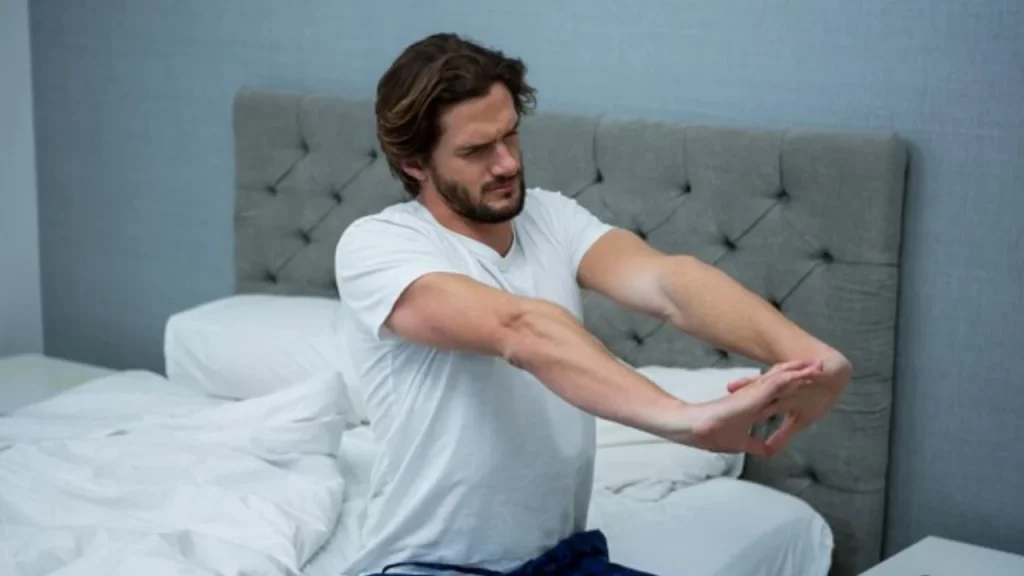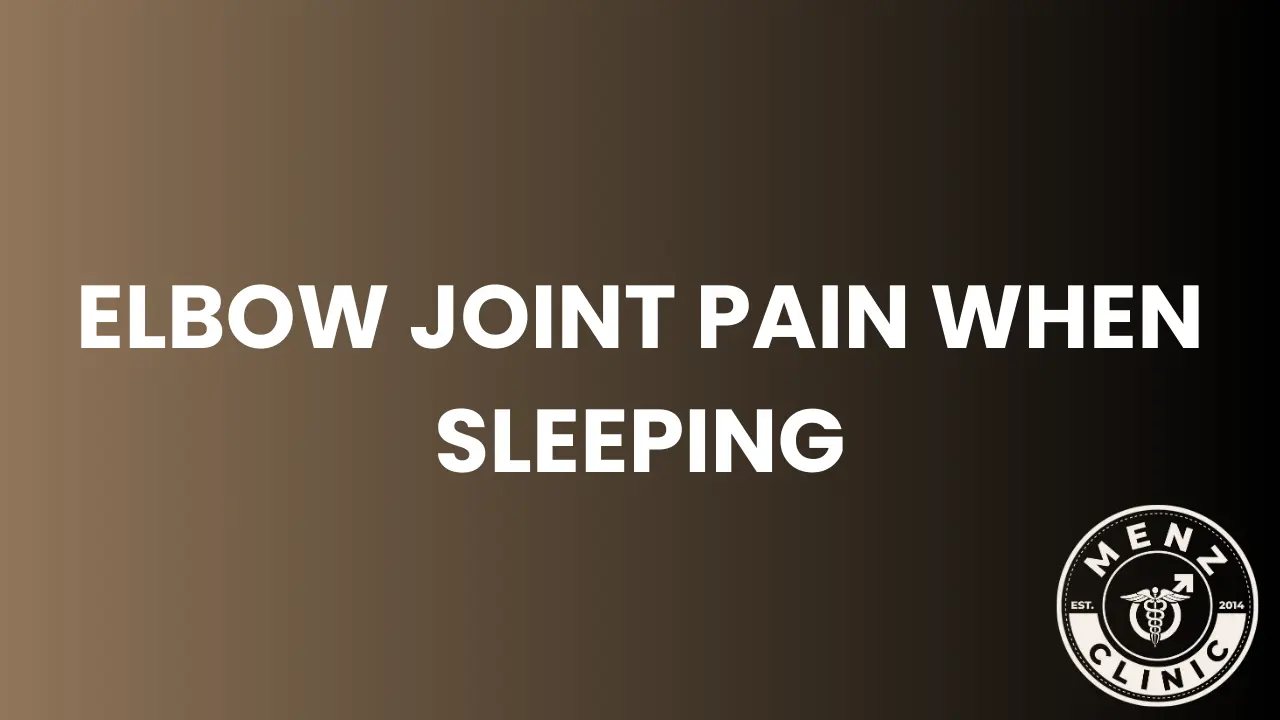Elbow joint pain when sleeping disrupts your rest and impacts your overall health. Lots of people experience this discomfort, it often goes unreported until it becomes a major issue. Aim of this blog to understand causes, Impact of Sleeping Position on Elbow Pain, and solutions for managing elbow joint pain, which occurs during sleep. Understanding these aspects can help you manage the pain effectively and improve your sleep. There is a higher likelihood of developing elbow pain. Understanding the causes of your elbow pain from sleeping is the first step toward treating it. Physical therapists can help you learn the cause of your pain. also they have the ability to effectively treat your elbow pain. Sleeping isn’t an activity that most people associate with elbow pain. In fact, sleeping is supposed to help the body heal and recover from pain. Yet there are certain issues that can trigger elbow pain from sleeping.
Causes of Elbow Joint Pain When Sleeping
Poor sleeping position: is the reason for elbow joint pain when sleeping . Many people sleep on their side with their arm bent under or over their head. Unfortunately, this sleeping position can be problematic for your elbows. This specific position can put additional strain on the outside of your elbow. In turn, being under this strain for hours every night can lead to elbow pain in the morning.
Ulnar nerve entrapment: The ulnar nerve runs through a part of the elbow called the cubital tunnel. This narrow passageway and the lack of soft tissue around it can allow the ulnar nerve to be pinched or irritated. Ulnar nerve entrapment tends to cause pain in the elbow that runs down into the hand. This pain can be increased if you sleep with bent elbows at night.
Elbow osteoarthritis: Like every other joint, the cartilage in your elbow can wear out over time. Wear and tear in your elbow cartilage that triggers inflammation is called elbow osteoarthritis. The pain this condition causes can be worse when you first wake up. This is because your arthritic elbow can stiffen up while you’re sleeping.

Impact of Sleeping Position on Elbow Pain
Elbow joint pain when sleeping can be affected by Sleeping Position.
Side Sleeping, Sleeping on one side can place pressure on the elbow that is in contact with the mattress. If the arm is not properly supported, this can exacerbate existing elbow pain or contribute to new discomfort. When you sleep on your side, the weight of your body can compress the elbow joint and surrounding tissues. If the arm is bent or twisted, it may increase strain on the tendons and muscles. Additionally, if a person suffers from conditions like lateral epicondylitis, resting on that side can aggravate the pain.
Back Sleeping, Sleeping on your back generally offers the best support for maintaining neutral joint positions. However, if an individual has a tendency to position their arms in awkward ways while sleeping on their back, it can still cause discomfort. Keeping the arms at an unnatural angle or having them rest on an uncomfortable surface can lead to tension and strain in the elbow. Using supportive pillows can help alleviate potential stress on the elbow joint.
Stomach Sleeping, This position can cause elbow joint pain when sleeping. It often results in the arms being placed under the body or in an awkward position, which can increase pressure and discomfort. Sleeping on your stomach can cause the elbows to be bent or compressed against the mattress, leading to increased strain on the elbow joint and surrounding tissues. This position can also contribute to misalignment and pressure on nerves, which might worsen elbow pain.

Solutions for Managing Elbow Joint Pain When Sleeping
Manage your pain. This can include medication, support taping or bracing or some exercises and hands-on treatments. It should also include sensible activity modification.
Activity modification, load management is a key element to recovery. When the tendon is irritated it is best to avoid or modify aggravating activities to allow the pain symptoms to settle before gradually increasing load. In particular you should avoid heavy gripping and lifting with the knuckles up.
Exercise can manage elbow joint pain when sleeping. Strengthening exercises have been found to provide the greatest effects of pain relief and functional improvement. It is important the exercises are graded and appropriately progressed.
Manual therapy – mobilization techniques and soft tissue massage applied to the elbow, wrist, cervical and thoracic spine may reduce pain and increase pain free grip strength.
Braces and taping – Elbow braces such as counterforce brace may be able to provide pain relief and improved function in the short term, to assist you in maintaining function.
Multimodal program – A multi-modal program consisting of manual therapy and exercise in the research has been shown to be more effective than injections in the short and long term for improving function and providing pain relief.
Conclusion
Elbow joint pain when sleeping can be several potential sources of elbow pain, most of which are not medically serious. Elbow joint pain during sleep is a common issue that can significantly impact your rest and daily life. By adjusting sleep positions, engaging in targeted therapies, and making lifestyle modifications, you can alleviate pain and improve your quality of sleep. Elbow Joint pain are clinical diagnoses determined after discussing your symptoms and examining you. Imaging, such as MRI, x-ray or ultrasound is typically only required if another potential cause of the elbow pain is suspected. Do not feel stress during pain. Psychological stress can actually increase pain. Elbow pain will settle with appropriate treatments and care. Let a professional assess you. Elbow pain can come from places other than the elbow, for example from the neck. Dr. J, M.D. is a elbow joint pain specialist and an experienced doctor in personal health, he is caring people at Menz Clinic in Orlando, FL.











